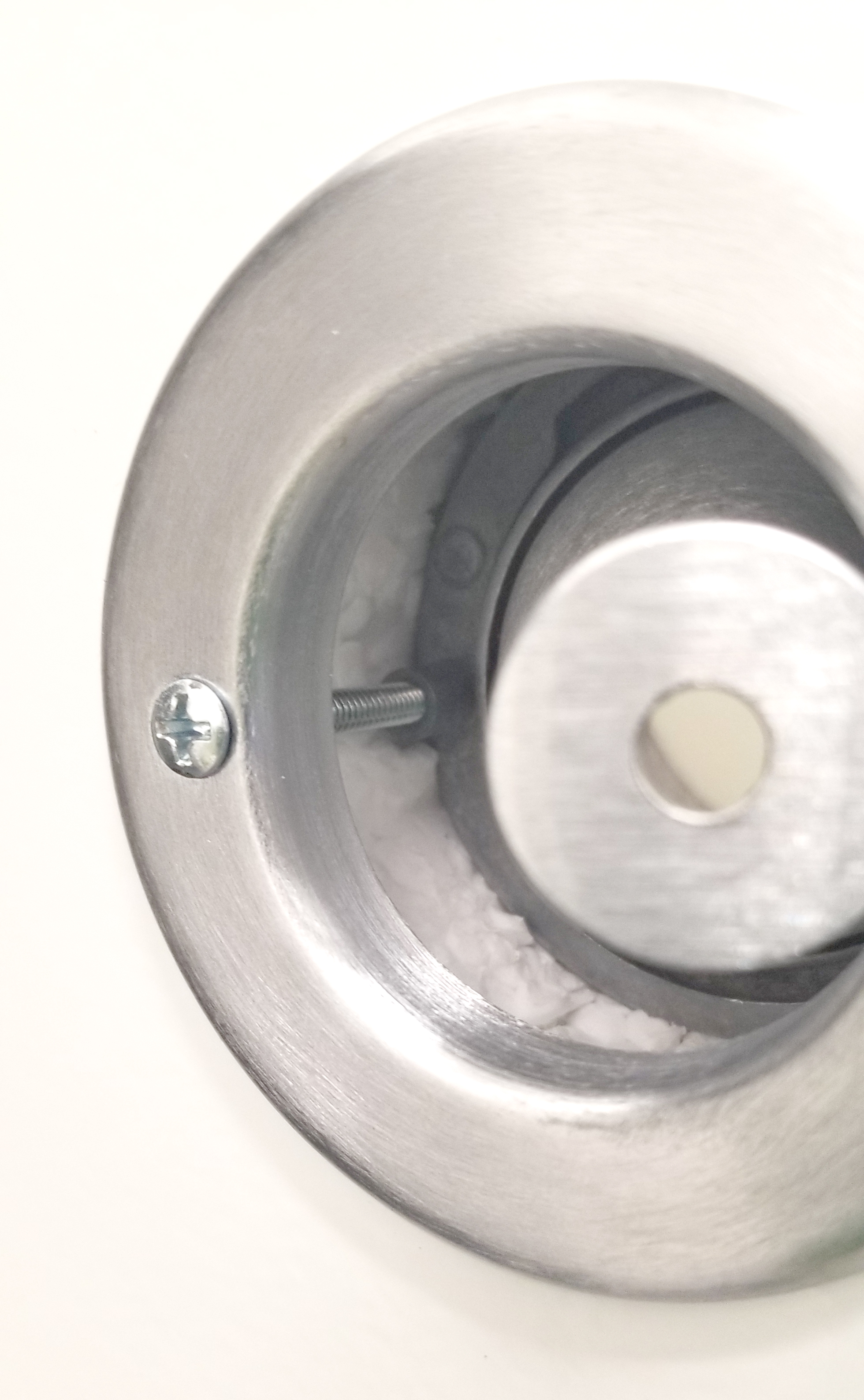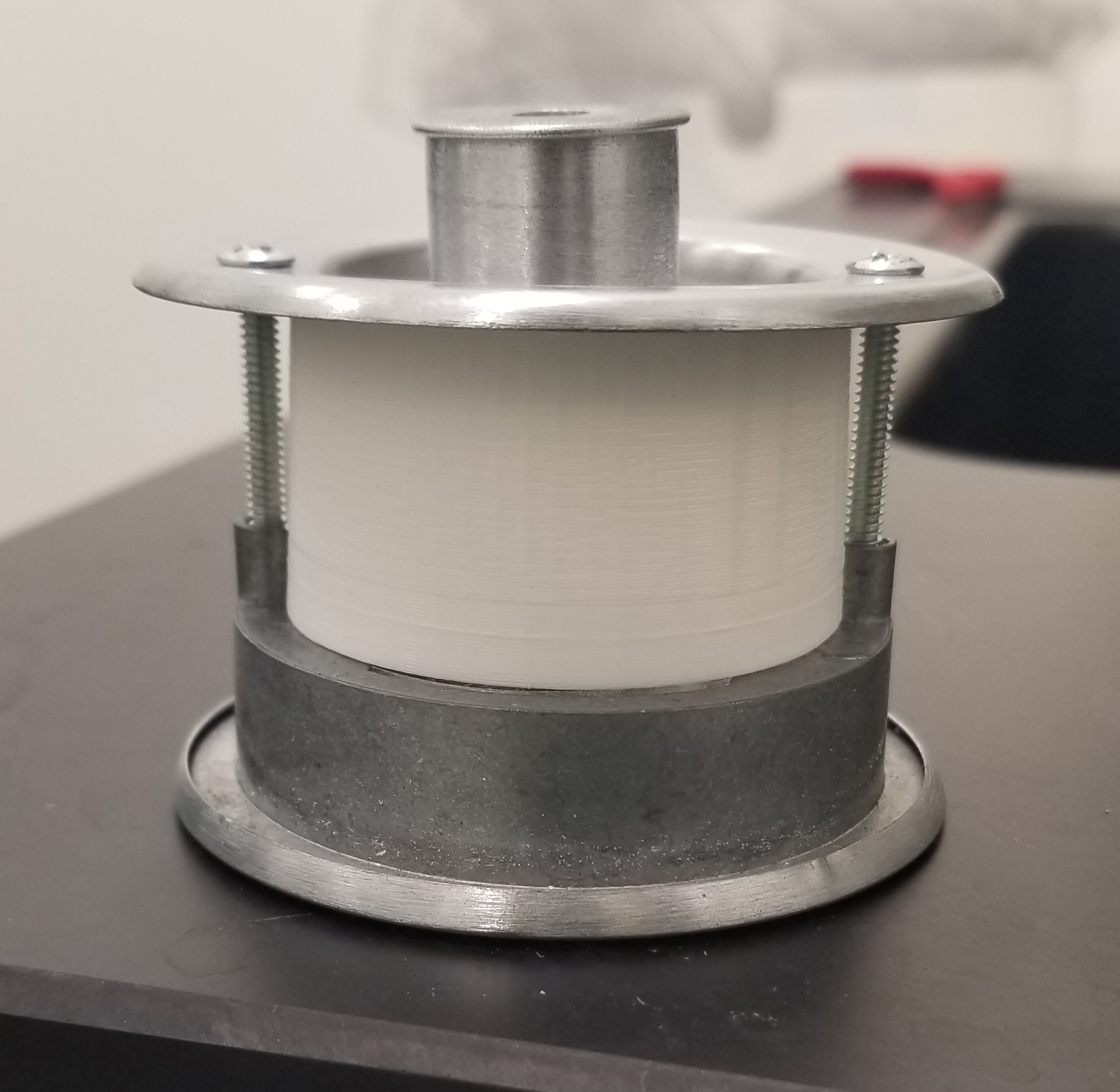Nick Gabbin, a project manager with University of Lethbridge Facilities, encountered a vexing problem while putting the finishing touches on the Science Commons, specifically in the vivarium, which houses live animals.
The vivarium follows strict decontamination protocols to ensure the space remains clean. The problem arose when viewers or peepholes were installed in the doors. The door viewers have a movable eyepiece that can be rotated to allow the viewer to see different parts of the room.

“Installing the viewers exposed the foam insulation inside the door,” says Gabbin. “We had to get them sealed because the foam would be a collection point for contaminants and would impede sanitation processes required by regulatory organizations.”
He considered using PVC piping or conduit to create a sleeve that would seal off the foam, but neither proved viable. When the manufacturer of the door viewer had no fix either, Gabbin went to the Agility Innovation Zone to devise his own remedy.
With help from Innovation Zone staff, Gabbin learned to use a drafting program, designed a sleeve and then 3D printed them to create a workable solution.
“I came up with five prototypes before I had one that fit perfectly,” says Gabbin. “Then it was a matter of 3D printing more than 60 of them and getting them installed.

“This was the first product to be prototyped, manufactured and used as a real-world product by University Facilities. We used University resources to solve an issue and saved time and money in the process.”
When installed, the plastic sleeve covers the foam insulation, thus keeping it from being exposed to any possible contaminants.
Agility is a donor-funded program that helps students, faculty and community members realize projects. The Innovation Zone in Science Commons provides free access to equipment like 3D printers and technologies like virtual reality. Donors include Dr. Cor Van Raay (LLD ’15), who believes innovation and entrepreneurship are necessary for the new generation and Bruce McKillop, who provides funding for students and community members to explore their ideas with Agility. Support also comes from the Regional Innovation Network of Southern Alberta (RINSA), a collaborative partnership that helps businesses bring new products or processes to market.
“The Agility Innovation Zone is a space that is open to everyone in the U of L community, no matter what the project entails,” says Brandy Old, Agility manager. “The Innovation Zone is a place where ideas can come to life. Supporting our community in developing local solutions, like the peephole project, means we can foster innovative thinking. We encourage anyone with an idea or a stuck problem to come to the Zone and talk to our staff.”
